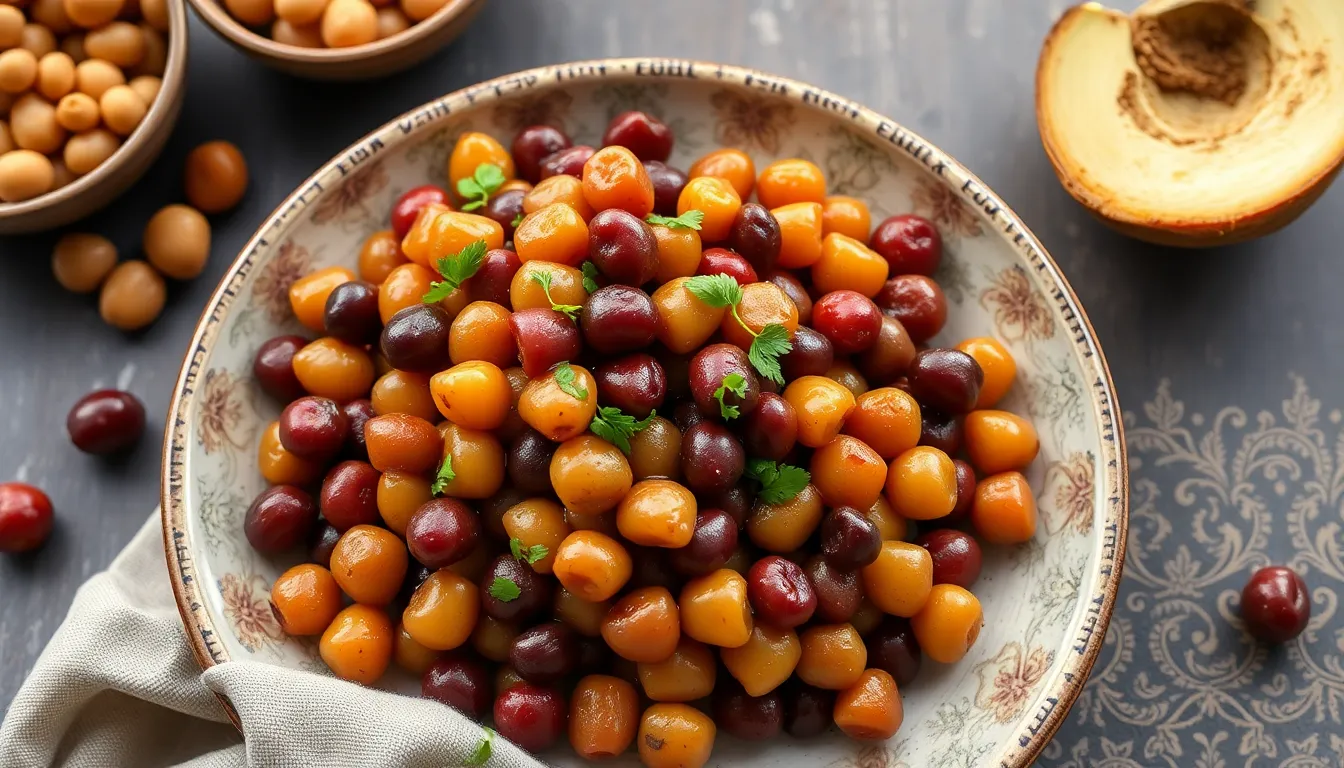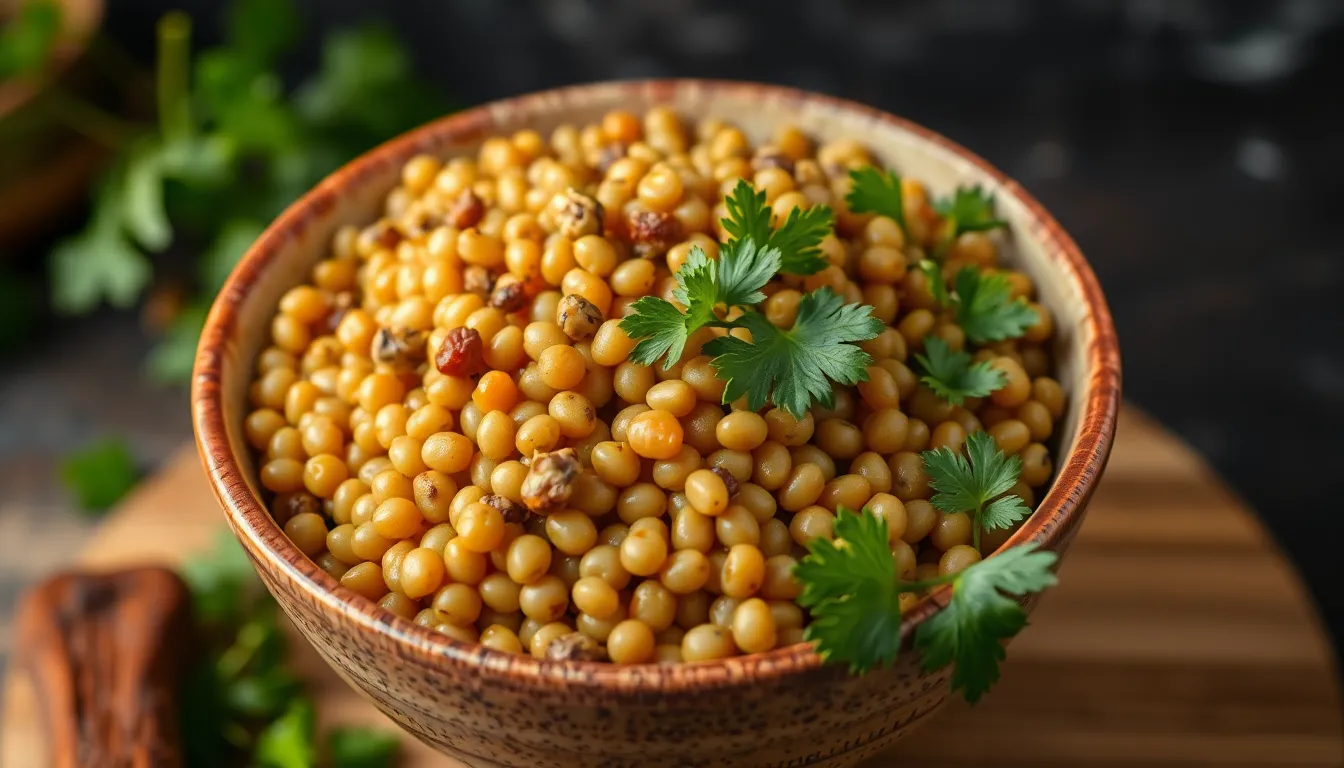The Science Behind Cooking Legumes: Tips for Perfect Results
Welcome to Spice Storyteller, where we unravel the culinary mysteries behind some of the most nutritious and versatile ingredients in our kitchens: legumes. These tiny powerhouses are not only packed with nutrients but also bring a multitude of flavors and textures to our meals. In this article, we will explore the science behind cooking legumes, provide practical tips for perfect results, and enhance your culinary repertoire.
Introduction
Legumes, including beans, lentils, and peas, are a staple in many diets around the world. They are rich in protein, fiber, vitamins, and minerals, making them a fantastic addition to your meals. However, to truly enjoy their full potential, it is essential to understand the proper cooking techniques that enhance their flavor and texture.
This article will guide you through the essential aspects of legumes, starting from understanding what they are, their nutritional benefits, and the chemistry involved, to practical tips for preparing and cooking them. We will also cover various cooking methods and how to elevate their taste through seasoning. Let’s dive in!
Section 1: Understanding Legumes
1.1 What are Legumes?
Legumes are a class of vegetables that includes a variety of plants that produce seeds in pods. They are known for their high nutritional value and include:
- Beans (black beans, kidney beans, pinto beans)
- Lentils (green, red, brown)
- Peas (green peas, split peas)
- Chickpeas
- Peanuts
The nutritional profile of legumes is remarkable. They are rich in:
- Protein: A great source of plant-based protein.
- Fiber: Important for digestive health.
- Vitamins and Minerals: Including iron, magnesium, potassium, and folate.
1.2 The Chemistry of Legumes
Legumes are composed mainly of three key components:
- Proteins: Essential for body repair and muscle growth.
- Carbohydrates: Provide energy and include complex carbohydrates that help regulate blood sugar levels.
- Fibers: Promote digestive health and can lower cholesterol levels.
However, legumes also contain anti-nutrients, such as lectins and phytic acid, that can interfere with nutrient absorption. Cooking legumes significantly reduces these anti-nutrients, making them safer and more beneficial for consumption.
Section 2: Preparing Legumes for Cooking
2.1 Soaking Legumes
Soaking legumes is a crucial step that helps to reduce cooking time and improve digestibility. Here are the main reasons to soak:
- Reduces cooking time by softening the legumes.
- Improves digestibility by breaking down complex sugars that can cause gas.
- Helps to leach out some of the anti-nutrients.
There are two common soaking methods:
- Overnight Soak: Soak the legumes in water for 8-12 hours, then drain and rinse before cooking.
- Quick Soak: Boil the legumes in water for 2 minutes, then remove from heat, cover, and let them sit for 1 hour before cooking.
2.2 Rinsing and Sorting
Rinsing legumes before cooking is essential for removing debris, dirt, and any potential toxins. Follow these steps for rinsing and sorting:
- Place the legumes in a colander and rinse under cold water.
- Sort through the legumes to remove any discolored or shriveled pieces.
- Check for small stones or debris that can sometimes be mixed in.
Section 3: Cooking Methods
3.1 Boiling vs. Pressure Cooking
When it comes to cooking legumes, boiling and pressure cooking are two popular methods. Here are their pros and cons:
| Method | Pros | Cons |
|---|---|---|
| Boiling | Simple and easy to control; allows for flavor adjustments | Requires more time; can lead to overcooking if not monitored |
| Pressure Cooking | Significantly reduces cooking time; retains nutrients | Requires special equipment; less control over cooking |
Ideal legumes for each technique:
- Boiling: Chickpeas, kidney beans
- Pressure Cooking: Split peas, lentils
3.2 Using a Slow Cooker
Slow cooking legumes is another excellent method that allows the flavors to meld beautifully over time. Benefits include:
- Convenient for busy schedules; set it and forget it!
- Enhances flavors as the legumes cook slowly.
- Perfect for soups and stews, where the flavors have time to develop.
Some recipes that work best in a slow cooker include:
- Chili with black beans
- Lentil soup
- Vegetable curry with chickpeas
3.3 Baking Legumes in Casseroles
Baking legumes is a less common method but can enhance their flavor significantly. Here’s how to incorporate legumes into casseroles:
- Combine legumes with vegetables, grains, and a flavorful sauce.
- Bake at a moderate temperature (around 350°F or 175°C) for at least 30-45 minutes.
- Check for doneness; legumes should be tender and flavorful.
Tips for incorporating legumes into casseroles:
- Use cooked or soaked legumes to speed up the cooking process.
- Add spices and herbs to enhance the overall taste.
- Mix with cheese and breadcrumbs for a crispy topping.
3.4 Cooking Times and Water Ratios
Understanding cooking times and water ratios is essential for perfect legumes. Here’s a handy comparison table for different legumes:
| Legume | Soaking Time | Cooking Time (Boiling) | Water Ratio |
|---|---|---|---|
| Chickpeas | 8-12 hours | 1-2 hours | 1:3 |
| Black Beans | 8-12 hours | 1-1.5 hours | 1:3 |
| Lentils | No soaking needed | 15-30 minutes | 1:2.5 |
| Split Peas | No soaking needed | 30-45 minutes | 1:3 |
Section 4: Enhancing Flavor and Texture
4.1 Seasoning and Aromatics
Seasoning legumes properly can elevate their flavor profile significantly. Here are some tips:
- Use aromatics: Onions, garlic, and ginger bring a depth of flavor.
- Incorporate herbs and spices: Bay leaves, cumin, coriander, and thyme can enhance taste.
- Salt and acidity: Add salt towards the end of cooking, and consider a splash of vinegar or lemon juice for brightness.
Experimenting with various spices can lead to exciting new flavor combinations!
4.2 Pairing Legumes with Other Ingredients
Pairing legumes with complementary ingredients can create more balanced meals. Consider these combinations:
- Grains: Serve legumes over rice, quinoa, or couscous for a complete protein.
- Vegetables: Add seasonal vegetables for a nutrient-rich dish.
- Proteins: Combine legumes with meats or tofu for added protein.
By incorporating these pairing strategies, you can create delicious, nutritious meals that highlight the unique qualities of legumes.
Conclusion
Cooking legumes may seem straightforward, but understanding their science and proper techniques can transform your culinary experience. From soaking and rinsing to various cooking methods and flavor enhancements, each step plays a vital role in achieving perfect results.
Whether you simmer them in a hearty stew, bake them in a comforting casserole, or toss them into a vibrant salad, legumes are versatile and nutritious additions to any meal. Explore these tips and techniques in your kitchen, and watch as your dishes become more flavorful and satisfying.
Happy cooking!




